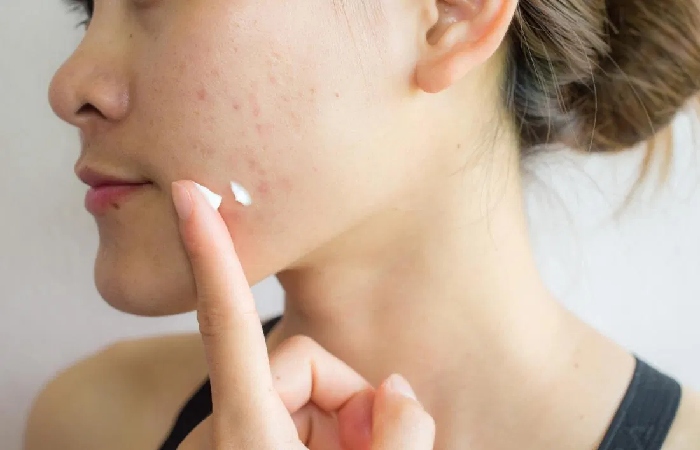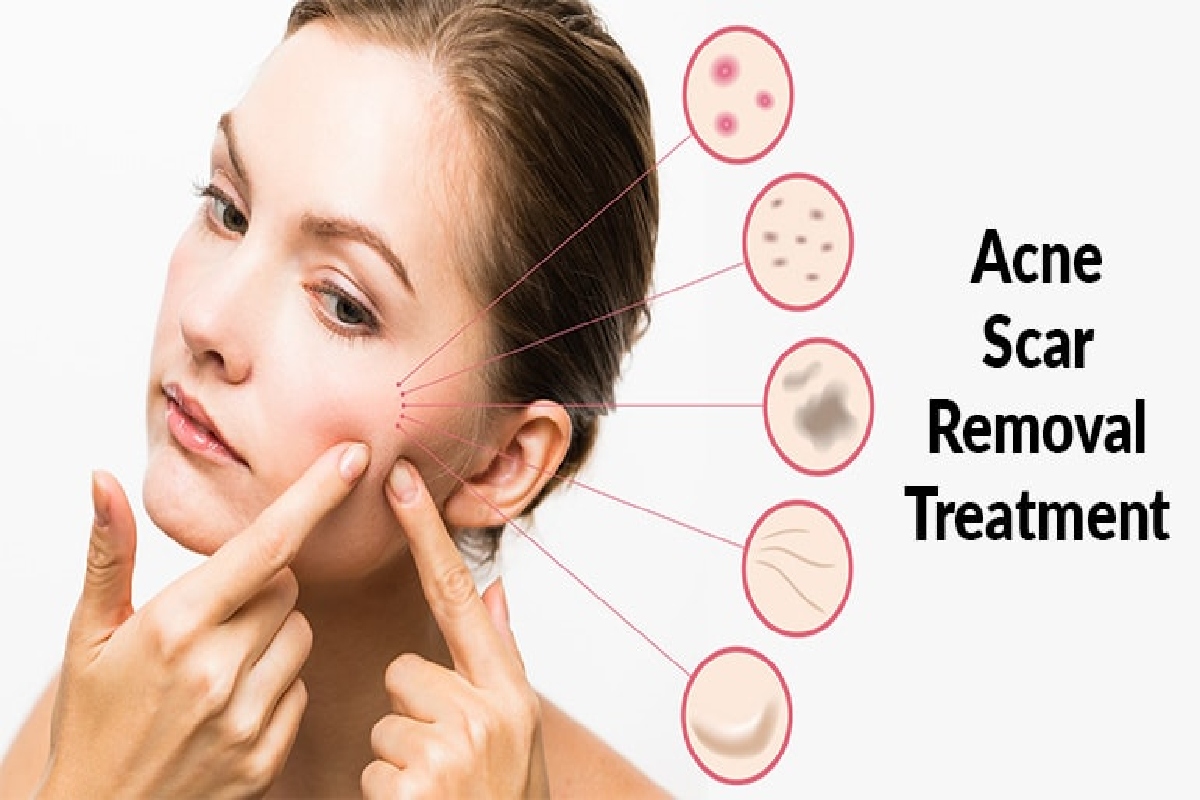Acne breakouts can be frustrating and can also leave scars on the face and other body areas. Some people consider acne scars an undesirable reminder of a painful and annoying condition. However, acne scars don’t have to be permanent. There are some home remedies and medical treatments that can help them go away.
Also Read: What is Moringa oil? – Uses, Benefits, and More
Table of Contents
Home remedies
Several remedies are available over the counter, and many of them can help people manage their acne and reduce the appearance of scars.
Salicylic acid

- Share on PinterestAcne is a common skin disorder, and many people experience acne scars.
- It is a naturally occurring compound that is often an ingredient in acne products. Salicylic acid helps clean dirt, skin cells, and other acne-causing debris from skin pores.
- It also helps reduce swelling and irritation in the area, which can minimize the appearance of scars.
- Salicylic acid is beneficial for all types of scars. It is an excellent addition to a daily skincare routine for most people living with acne.
- People with sensitive skin should try a product that contains this acid on a small area of the skin before using it on the entire face, as it can cause dryness or irritation.
Also Read: Best Body Lotions Of 2021 For All Skin Types
Retinoids
- Some topical retinoids can help remove acne scars.
- As the review published in the medical journal Dermatology and Therapy explain, topical retinoids block inflammation, reduce acne lesions, and accelerate cell generation.
- It also indicates that retinoids may help lighten hyperpigmented acne scars, even in people with darker skin tones.
- It is essential to note that retinoids can make the skin sensitive to the sun. Anyone who uses retinoids to treat acne or scars should use sunscreen when going outside.
Alpha hydroxy acids
- It can help get rid of dead skin cells and prevent pores from clogging. Some doctors recommend AHAs to treat acne and reduce the look it.
- It is a mild form of acid that scrapes off the outer layer of skin to bring out a fresh, new coat underneath. This process can help with discoloration due to scarring.
Lactic acid
- Lactic acid can act as a gentle exfoliator to remove dead skin cells. It also helps reduce the appearance of scars and smooth the overall texture of the skin.
- It can also help reduce dark scar tissue, although it sometimes causes hyperpigmentation.
- Due to this possible side effect, it is best to test products containing lactic acid on a small skin area before using it to treat acne scarring.
- Many acne products contain lactic acid. It is found in apple cider vinegar, which makes it a more natural and economical treatment.
Natural medicine
Many people use natural remedies to help remove acne scars, but the scientific evidence behind them is unclear. Some can cause further irritation or other problems, so they should use with caution.
Home remedies that have traditionally used to treat acne scars include:
- coconut oil
- shea butter
- aloe vera gel
- pure honey
- baking soda
- lemon juice
Medical treatments
Various medical treatments are accessible to help diminish acne scars.
A dermatologist may recommend different measures depending on the type of skin and the degree of scarring.
Medical treatments for acne scars include
Also Read: How to apply mascara without making a mess
Chemical scrubs

Dermatologists can recommend medical treatments for acne scars.
- You can also suggest a suitable scrub for each person’s skin type, acne severity, and scarring.
- The authors of a 2021 review of acne scar treatments cite a study that found that 6 out of 10 participants using a chemical exfoliator called trichloroacetic acid (TCA) had at least 70% improvement in acne scars.
- Other chemical exfoliants may be less effective. For example, 25% of people who used glycolic acid did not see any reduction in the appearance of scars.
- Each person may need to try different types of scrubs to determine which one works best for them.
Injections
- Corticosteroid injections can help treat highlighted acne scar tissue for those with hypertrophic or keloid scars.
- Treatment usually consists of a series of injections. A dermatologist can administer these injections in his office once every few weeks, monitoring the results.
Dermal filler
- In some cases, dermatologists recommend using soft tissue dermal fillers to reduce the appearance of scars.
- Dermatologists may choose a filler consisting of a collagen-based product, which may require allergy testing.
- Another option could be to remove fat from another part of the body and use it.
- They can also use other commercial fillers like polymethylmethacrylate, hyaluronic acid, and poly-L-lactic acid.
- It works best for atrophic scars, but many are temporary. Treatment usually lasts between 6 and 18 months.
- However, there are permanent options that you can discuss with your dermatologist.
Micropuncture
- Micropuncture is the process of inserting tiny needles into the skin around the scar to stimulate the body to produce more collagen.
- This collagen can reduce the appearance of acne scars by smoothing the skin.
- In a 2021 article, micropuncture provided a 31% to 62% improvement in the appearance of acne scars.
- However, micropuncture can cause side effects. Many people experience irritation, pain, and inflammation after treatment, but these effects wear off over time.
Laser treatment
- The laser treatment revives the skin without the use of chemicals or scrubs.
- Laser treatment removes the top first layer of skin to reveal younger skin cells, which can help reduce the appearance of scarring.
- However, laser treatment is not suitable for everyone as its success depends mainly on the acne scar and the person’s skin type.
- Therapy can also cause a reaction in some people, especially those with sensitive skin.
Types of acne scars
Some treatments are effective for certain types of acne scars.
Appropriate treatment options may vary slightly depending on the type of acne scar. There are three types of acne scars:
Atrophic scars
- These scars look like small indentations in the skin.
- They appear when the skin does not produce sufficient fibroblasts in the remedial process.
- These are cells that play a crucial role in wound healing and collagen synthesis.
Hypertrophic scars
- These appear when the skin produces too many fibroblasts as acne spots heal, causing a raised scar.
Keloid scars
- These are similar to hypertrophic scars but are usually much thicker than the original acne spot.
- They are darker than the surrounding skin and can be red or brown. Keloid scars can also cause symptoms such as itching or pain.
Conclusion
Acne scars can be an undesirable reminder of acne and can affect some people’s self-esteem, but they don’t have to be permanent.
Many people are successful in using one or more home remedies. In cases of difficult scars, dermatologists offer in-office medical treatments that can help remove acne scars.
You Can Also Read These Articles too:
Tricks to bleach body hair easily and without leaving home
Sultan Full Movie Download Filmyzilla
Nail clippers for a perfect pedicure

